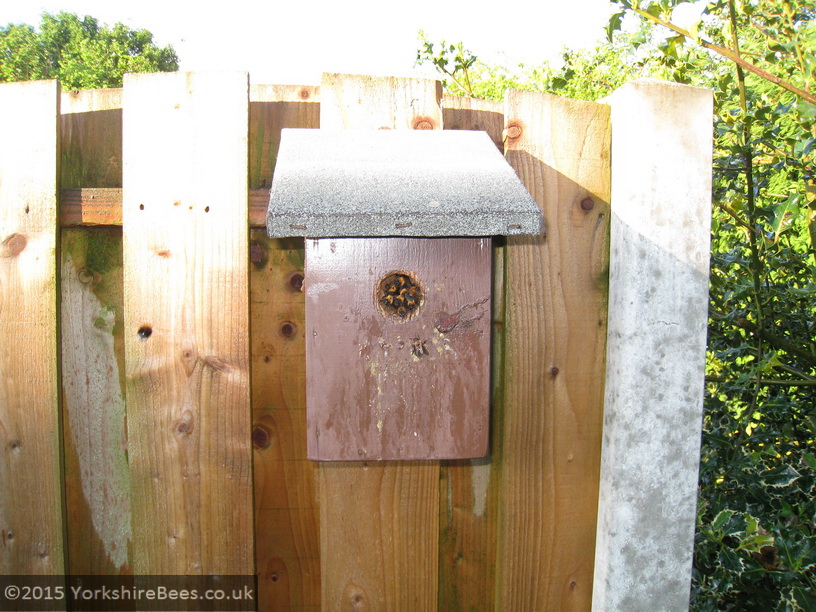Most bird boxes are too small for a honeybee colony and it is almost certainly bumblebees that you have. Tree Bumblebees love birdboxes although other species of bumblebees will take over an old bird’s nest in a birdbox.

The Bumblebee Conservation Trust writes: We do not recommend moving nests unless absolutely necessary. It is much better for the bees if they can stay where they are, and thoughtful education of the “human landlords” can change their mindset from consternation about the bees to interest and wonder!
If you do need to move a tree bumblebee nest in a bird box, wait for any flying bees to return home – usually late dusk (they fly noticeably later than honey bees). Work in the dark wearing bee-gear (smoke won’t be needed, it doesn’t work on bumblebees). Beware – you might get stung, but bumblebee stings are un-barbed, so you only get a small dose of venom. Use red light from a cycle rear-light, or even better a head torch – so you can see what you are doing, but the bees (who don’t see red) can’t see what’s going on. Quickly stop up the nest-box entrance. (I use a roll of Scotchbrite kitchen scouring pad for this, because it is very air-porous and when rolled-up it can expand nicely to fill the entrance hole; but the flexible foam used in furniture cushions, or bathroom sponges also works OK.) Lift the box from its hook. Check for, and quickly tape over any gaps bees could get through. Keep the box upright. Now there are two options:
Re-locating close-by. Re-locate the nest box onto a stable surface close to its original location (say 1 – 3 metres) but in a position less awkward for human passers-by. The following day, quickly remove the bung to release the bees and retire to a safe distance. When they come out of the box the bees will quickly ‘re-orientate’ – and shutting them in for a few hours will help them realise their location is a bit different.
Re-locating further away. Keep the box upright and somewhere cool and dark overnight, while they are shut-in. The following day, fix the box to a firm surface not liable to vibration and ideally a mile or more from the original location. Remove the bung and release the bees – they will re-orientate.
The reason for the mile spatial separation is to minimise the risk of bees returning to the original nest location to which they used to come home. In either case at the original location, a few bees might return. These will be ones who camped-out overnight then came back to find ‘home’ gone, but these will soon diminish. (Only bumblebees camp-out, not honey bees.) Lost bees will either die off quite quickly, or perhaps go and join another local colony of their species.
At its new location the Tree bumblebee colony can be a fascinating learning opportunity. Males doing nest surveillance in the locality can find the colony at its new location within about 20 minutes! (https://www.bumblebeeconservation.org/tree-bumblebee-bombus-hypnorum/#movenest)

